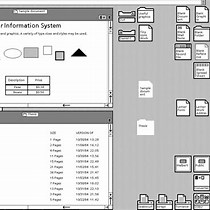No matter how good a copy machine can be, the quality will get worse and worse. 1000 years from today, the final copy will be very poor.
If Bill Gats didn't create Window, today we are still using DOS.
A copy machine, yes. Transcribed copies that are meticulously checked by diligent monks? The Bible was transcribed this way for thousands of years, ensured to such exact detail that every page must be consistent with the previous writing. This is different than copying from a copy with extra noise in the image.
You're also starting to confuse the quality of copies, with the need for innovation. For example, if I were to install MS-DOS onto a computer today, would it be WORSE than MS-DOS in the 1990s? I don't think so. It wouldn't necessarily be as good as Windows, but it's not like DOS itself has gotten worse over time.
And while we're on the subject, you also get things like Vista, which was worse than XP, and Windows 8, which was worse than Windows 7. Just because something is newer, doesn't mean it's better.
Then you get other problems, like how in Windows 10, several pieces of software no longer work, and you have to buy the latest version. I had the issue with a Blu-Ray player that would no longer work after I installed Windows 10, and the only way to get it to play is to buy the new version of the Blu-Ray player for $140. So the "innovation" ends up tacking on extra charges, and I can easily see that a school with "new" forms might list it as a feature they charge extra for.
Form is a set of combos that linked together. For example, a form can have 2 combos, "This is a book. What do I do with this book?".
...
The form is used for teaching and learning purpose. It records information.
...
Form is created from a set of partner drills without partner.
...
It contain
- techniques (vocabulary), and
- principles/strategies (grammar).
This is YOUR definition of a form. And it doesn't seem very consistent. Is it for linking combos together or for rote recording of techniques? Is it for partner drills (which involve failure, counters, and reactions) or is it simply about combinations? Is the goal instruction or as a system of record?
Some people use forms to teach exaggerated precision in the technique. Some use forms to teach combos. Some use forms as a replacement for partner drills when you're at home. Some simply use it as a system of record.
The reason why these questions are asked is because that will define the need for innovation in the form, as well as what type of form you need to create.
If it's simply a record of techniques, there doesn't really need to be any change, unless you add or remove techniques. If the purpose is to teach the techniques and combinations, then simply changing one form or adding a form isn't going to be enough and you have to shift your entire curriculum.
If your form is simply a set of combinations, then you train the form for the combination and do partner drills to work on practical precision and counters and reads. If your form is partner drills without a partner, then the forms will naturally change as your drills change.
The purpose and the design of your forms within your curriculum and style is an important consideration.

